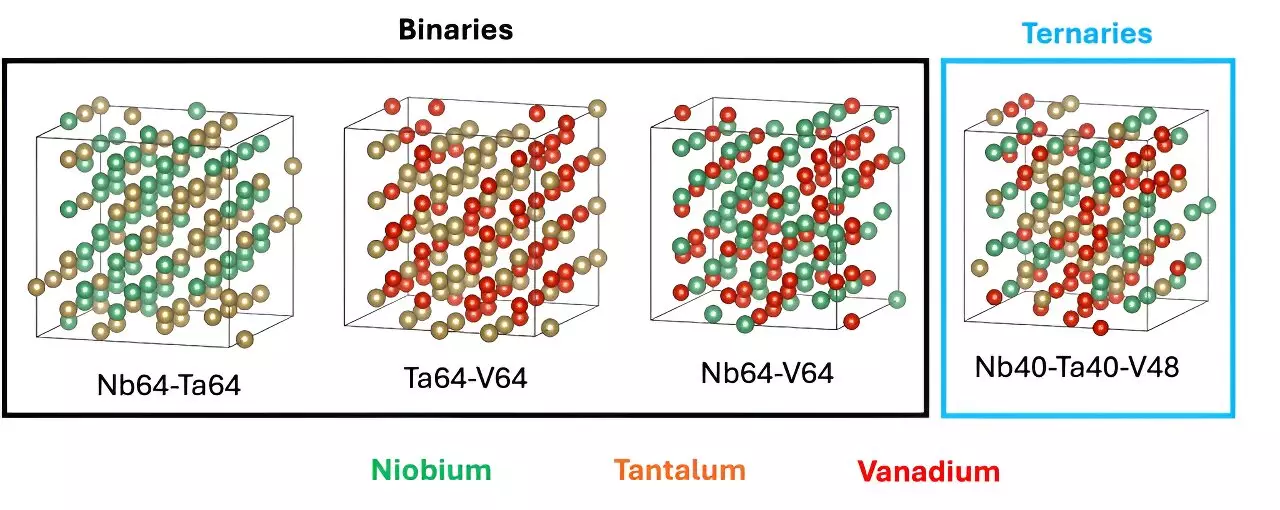In recent years, the fusion energy sector has faced significant challenges, particularly concerning the development of advanced materials capable of withstanding the extreme conditions found in nuclear fusion reactors. A groundbreaking study conducted by researchers at Oak Ridge National Laboratory (ORNL) has demonstrated a sophisticated application of artificial intelligence (AI) in discovering new alloys specifically engineered for fusion applications. This research, an evolution of efforts led by former AI Initiative Director David Womble, encapsulates the synergy between computational power and material science, marking a substantial advancement in nuclear technology.
Traditionally, fusion reactor components have relied on tungsten-based alloys praised for their high-temperature resistance. However, reliance on such materials has highlighted significant limitations, especially concerning shielding consistency and overall structural integrity under extreme operational demands. In response to these shortcomings, ORNL data scientist Massimiliano Lupo Pasini, along with a multidisciplinary team, has initiated an innovative project under the Artificial Intelligence for Scientific Discovery (AISD) umbrella. Their goal? To use AI to generate combinations of metallic elements that could bypass the rigorous trial-and-error process that has traditionally characterized materials discovery.
By employing AI algorithms, the research team aims to streamline the identification of candidate alloys by analyzing vast datasets and predicting the structural behaviors of different metallic combinations. This novel approach is not merely an enhancement of existing methods but represents a paradigm shift in how scientists can conceive and synthesize new materials for industrial applications.
One of the central hurdles in the alloy discovery process is the sheer number of potential combinations of elements. Researchers are tasked with exploring countless permutations to identify the most effective metallic blends. This endeavor is compounded by the necessity of quantum mechanical calculations, which provide crucial insights into how different alloys will behave. These calculations are extraordinarily resource-intensive, requiring substantial computational power, which in itself has been a limiting factor in materials research.
Lupo Pasini and his collaborators have worked on overcoming these computational challenges, utilizing high-performance computing resources like the Perlmutter and Summit supercomputers. These powerful machines facilitated intensive data generation, culminating in an AI model capable of identifying new alloy candidates through simulation rather than exhaustive physical experimentation. As Lupo Pasini notes, “The data generation took over a year,” emphasizing the labor and time invested in this foundational research.
The study published in the journal *Scientific Data* represents the first significant milestone in a larger initiative focused on identifying and refining refractory high-entropy alloys for fusion applications. By establishing an AI-generated database, the team sets the stage for further investigations that will involve developing machine learning models designed to predict alloy performance based on specific elemental combinations and their concentrations.
This stage of research is pivotal, as it transitions from the data-gathering phase to the practical application of machine learning for materials design. “We are trying to help the material scientists with their trial-and-error approaches,” said Lupo Pasini, emphasizing the ultimate goal of enhancing efficiency in discovering capable materials for fusion reactors. The team is particularly focused on understanding how varying percentages of six key elements can yield disruptive technological advances in fusion energy.
The ongoing intersection of AI and materials science promises to redefine foundational aspects of fusion technology, with Oak Ridge National Laboratory leading the charge. By harnessing AI and supercomputing capabilities, researchers have embarked on a transformative journey to foster innovation in material development, crucial for the future of nuclear fusion. This paradigm shift not only streamlines alloy discovery but also heralds a new era of scientific discovery where AI and human ingenuity can collaboratively forge solutions to some of the most significant challenges facing energy generation today. As the team continues to refine their models, the implications for energy production and sustainability could be profound, paving the way for a cleaner, more efficient fusion energy landscape.


Leave a Reply